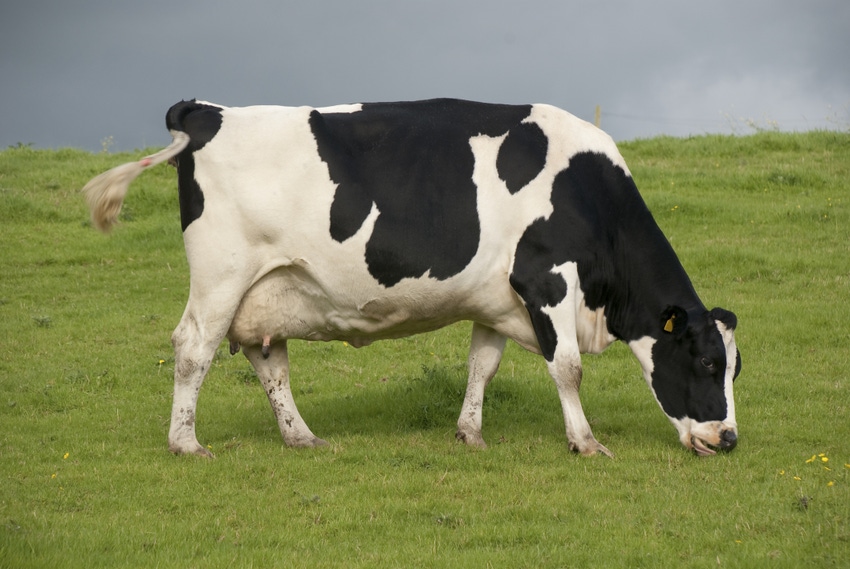Study shows long-term persistence of heavy metals in environment may trigger genetic changes and interfere with microorganism communities.
November 17, 2020

Dairy cows, exposed for a few years to drinking water contaminated with heavy metals, carry more pathogens loaded with antimicrobial-resistance genes able to tolerate and survive various antibiotics, according to an announcement from The Pennsylvania State University.
The finding came from a team of researchers that conducted a study of two dairy herds in Brazil four years after a dam holding mining waste ruptured, and it spotlights a threat to human health, the researchers contend.
The study is the first to show that long-term persistence of heavy metals in the environment may trigger genetic changes and interfere with the microorganism communities that colonize dairy cows, according to researcher Erika Ganda, assistant Penn State professor of food animal microbiomes.
"Our findings are important because if bacterial antimicrobial resistance is transferred via the food chain by milk or meat consumption, it would have substantial implications for human health," she said. "What we saw is, when heavy metal contamination is in the environment, there is potential for an increase of so-called 'superbugs.'"
A South American environmental calamity triggered the research. Known as the Mariana Dam disaster, the Fundao Tailings Dam suffered a catastrophic failure in 2015 and released more than 11 billion gal. of iron ore waste. The huge wave of toxic mud flowed into the Doce River basin surrounding Mariana City in Minas Gerais, a state in southeast Brazil, the announcement explained.
Following this catastrophe, the team analyzed the consequences of long-term exposure to contaminated drinking water on dairy cattle.
To reach their conclusions, researchers identified bacterial antimicrobial-resistance genes in the feces, rumen fluid and nasal passages of 16 dairy cattle in the area contaminated by the iron ore waste four years after the environmental disaster. Researchers compared samples taken from those animals to analogous samples from 16 dairy cattle on an unaffected farm about 220 miles away.
The microorganism community in the cattle continuously exposed to contaminated water differed in many ways from the cows not exposed to heavy metals, noted researcher Natalia Carrillo Gaeta, doctoral student and research assistant in the department of preventive veterinary medicine and animal health at the University of Sao Paulo, Brazil.
The relative abundance and prevalence of bacterial antimicrobial resistance genes were higher in cattle at the heavy metal-affected farm than in cattle at the non-contaminated farm, she pointed out.
The data, published Nov. 16 in Frontiers in Microbiology, suggest that exposure to heavy metal contamination results in the selection of bacteria that have resistance genes to heavy metals, biocides and several drugs, Gaeta explained.
"We found that bacterial antimicrobial resistance genes are most readily detected in fecal samples," she said.
The link between heavy metal concentration in the environment and increased prevalence of antibiotic resistance in bacteria has been seen before, Ganda said. Known as "co-resistance phenomenon," it is characterized by the closeness between different types of resistance genes located in the same genetic element.
"As a result of this connection, the transfer of one gene providing heavy metal resistance, may occur in concert with the transfer of the closest gene, providing antibiotic resistance," she said. "Consequently, some resistance mechanisms are shared between antibiotics and heavy metals."
Ganda's research group in the Penn State College of Agricultural Sciences works with the One Health perspective, which focuses on the interaction between animals, people and the environment. She believes this research presents a good description of a One Health problem.
"In this Brazilian environmental disaster, not only were several people and animals killed by the devastating flood caused by the dam rupture, but the contamination persisted in the environment and made it into dairy cows; that could potentially pose another risk for humans," Ganda said. "If these animals are colonized, resistant bacteria could also make it to humans and colonize them through the food chain."
Also involved in the research at Penn State were Asha Marie Miles, postdoctoral scholar in the department of animal science, and Emily Bean, doctoral candidate in the Intercollege Graduate Degree Program in Integrative & Biomedical Physiology; as well as Daniel Ubriaco Oliveira Gonçalves de Carvalho, Mario Augusto Reyes Alema, Jeferson Silva Carvalho and Lilian Gregory with the University of Sao Paulo department of internal medicine, School of Veterinary Medicine & Animal Science.
This work was supported by the Sao Paulo Research Foundation, the Brazilian agency CAPES and the U.S. Department of Agriculture's National Institute of Food & Agriculture.
You May Also Like



